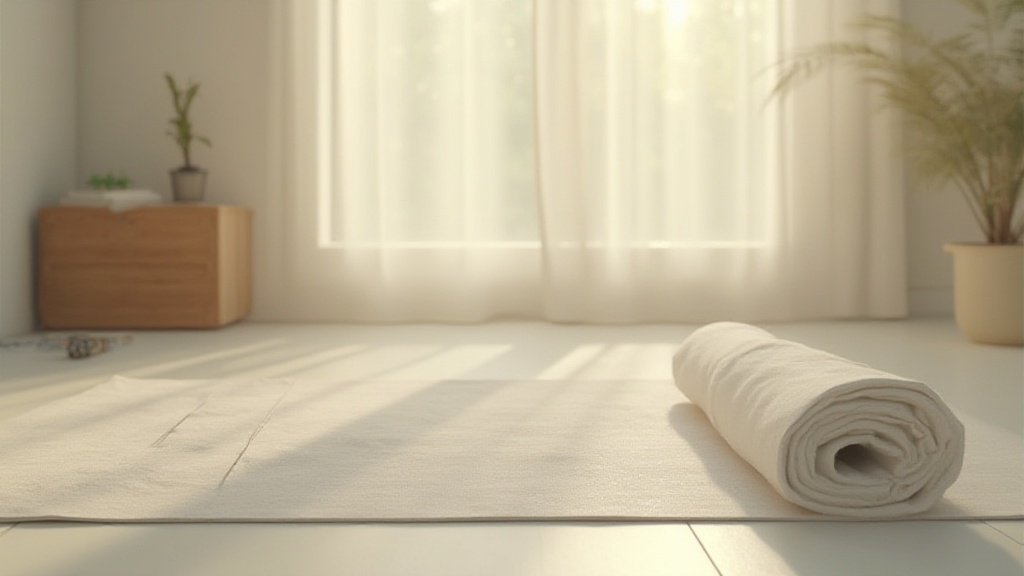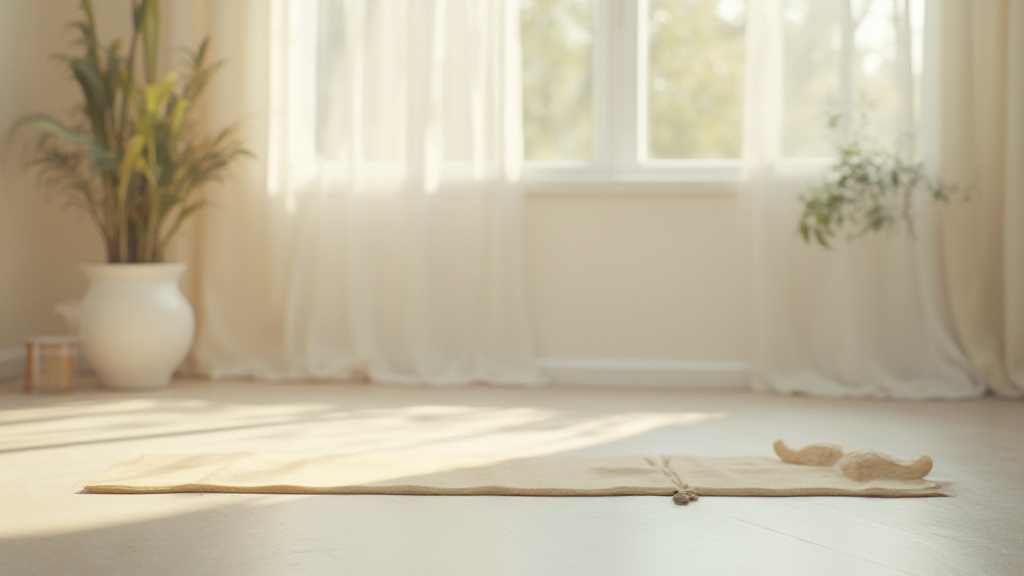
Stretching exercises for seniors play a significant role in improving flexibility, which is essential for maintaining overall mobility. Engaging in gentle stretches promotes circulation and alleviates muscle stiffness, ultimately enhancing older adults’ physical health.
Regularly practicing a stretching routine aids in pain relief, allowing seniors to partake in daily activities with increased comfort.
These straightforward exercises nurture a sense of relaxation and well-being, encouraging individuals to integrate them into their lifestyles.
Incorporating such practices can seamlessly become part of a morning or evening ritual, thereby supporting elderly mobility and fostering overall independence.
Benefits Of Stretching For Seniors
Implementing a variety of stretching exercises for seniors provides significant benefits that support overall wellness. Stretching enhances flexibility and improves coordination and balance, which are essential components for effective fall prevention.
As seniors age, maintaining physical health becomes increasingly important; stretching routines assist individuals in achieving their fitness goals while promoting joint health. The following sections explore specific advantages of stretching:.
Enhanced Flexibility and Mobility
Engaging in stretching exercises for seniors not only improves flexibility but also enhances mobility.
Gentle stretches can target major muscle groups, which helps seniors achieve better overall range of motion.
By dedicating 10-15 minutes each morning to a stretching routine that includes neck stretches, shoulder stretches, back stretches, leg stretches, and arm stretches, seniors can experience significant improvements in their daily movements.
Improved Balance and Coordination
Stretching can effectively boost balance and coordination among older adults.
These skills are essential for maintaining independence and reducing the risk of falls. Regularly engaging in stretching exercises fosters safety through improved core stability and muscle tension relief, further aiding in fall prevention.
Incorporating dynamic stretching and static stretching into daily routines can enhance overall functional fitness.
Mindfulness and Relaxation
The incorporation of relaxation techniques and breathing exercises within a stretching routine not only contributes to physical health but also fosters mental well-being. Gentle movements and stretches enable seniors to practice mindfulness, which can promote a greater sense of relaxation and reduce stress.
This holistic approach to fitness helps create an atmosphere conducive to active aging.
To effectively incorporate stretching into daily life, seniors can join group classes that encourage social interaction and individualized exercises.
By doing so, they engage in a supportive environment that reinforces commitment to fitness goals and community wellness programs.
As seniors progress in their stretching journey, they not only enhance their flexibility and mobility but also cultivate the necessary skills for graceful aging.

How To Improve Flexibility Safely
Improving flexibility safely is essential for overall health, particularly for older adults. Emphasizing injury prevention highlights how effective stretching practices can minimize risks.
Gradual progression is important in stretching routines, enabling individuals to increase intensity without overexertion.
A simple warm-up exercise such as Neck Rolls serves as an excellent starting point.
To execute this, stand or sit comfortably, gently roll your head in a circular motion for 30 seconds, and switch directions halfway through. This exercise prepares neck muscles, fosters relaxation, enhances mobility, and promotes effective flexibility training.
Essential Gentle Stretches For Older Adults
Integrating gentle stretches is vital for improving flexibility and alleviating common tension experienced by older adults.
Specific stretches can target areas often affected by stiffness. The Seated Forward Bend, for instance, stretches the hamstrings and lower back, known for their susceptibility to tightness.
To perform this stretch, sit on the floor with legs extended, then gently lean forward towards the toes while maintaining a straight back for 15-30 seconds.
Incorporating consistent stretching routines yields significant improvements in mobility and overall wellness.
Another beneficial stretch is Shoulder Rolls.
This exercise involves rolling the shoulders forward and backward for 30 seconds.
Establishing a stretching schedule, performed daily, maximizes the benefits of flexibility training and promotes joint health.
Additional Gentle Stretch Options
- Back Stretch: While seated, gently twist your torso to the right, holding for 15 seconds, then repeat on the left side.
- Leg Stretch: Seated with one leg extended, pull the toes towards you, holding for 15-30 seconds.
- Arm Stretch: Raise one arm overhead, bending at the elbow to stretch the triceps, holding for 15 seconds on each side.
A consistent practice of these stretches, along with mindful breathing exercises, can greatly enhance flexibility and overall health.
Flexibility and Stretching
- Regular stretching can improve overall flexibility by up to 25% over time.
- Studies show that consistent stretching routines reduce the risk of injury by enhancing muscle elasticity.
- Gentle stretching has been linked to improved joint health and reduced stiffness in older adults.
- Mindful breathing during stretching can enhance relaxation and increase the effectiveness of flexibility training.
Tips For Pain Relief Through Stretching
Chronic pain often affects daily life, making effective management essential. Specific muscle groups, such as back muscles, hip flexors, and hamstrings, frequently tighten, contributing to discomfort and mobility issues.
Stretching these areas regularly can provide substantial relief, enhancing flexibility and reducing tension.
For example, engaging in gentle stretches during daily routines or before and after physical activity can maximize flexibility.
Aim to incorporate stretching sessions into your day, ensuring that you hold each stretch for 15-30 seconds. This practice not only aids in pain relief but also promotes overall health and wellness.
Timing Your Stretching Routine
Implementing a stretching routine can be most beneficial when integrated into key parts of your day.
Consider performing stretches in the morning to enhance mobility or in the evening as a form of relaxation. This practice helps combat muscle stiffness and promotes better joint health, ultimately contributing to improved physical activity outcomes.
Enhancing Balance With Simple Exercises
Achieving and maintaining balance is imperative for effective fall prevention, particularly among older adults.
Various stretches can enhance balance and stability, contributing to reduced injury risk.
For instance, practicing the Standing Quad Stretch and Tree Pose can significantly improve core stability and proprioception.
These exercises not only support mobility but also fortify overall health, ensuring a safer environment for daily activities.
Developing a Balance-Focused Stretching Routine
To create an effective balance-focused stretching routine, hold each stretch for 15-30 seconds, repeating it 2-3 times per session. Incorporating these movements regularly fosters coordination and strength, which are essential for active aging.
This approach supports an overall sense of stability, enhancing daily functioning and reducing the likelihood of falls.
Pain Relief and Balance
- Regular stretching can reduce muscle tension and improve flexibility, which is crucial for managing chronic pain.
- Engaging in stretching exercises can enhance joint health, reducing the risk of injury during physical activities.
- Balance exercises, such as the Standing Quad Stretch and Tree Pose, can significantly improve stability and proprioception, especially in older adults.
- Incorporating a balance-focused stretching routine can foster coordination and strength, essential for active aging and fall prevention.
Can Stretching Prevent Falls In Seniors
Many seniors experience increased fall risks due to factors such as muscle weakness and poor balance. Stretching exercises play a significant role in enhancing flexibility, which is essential for maintaining stability and coordination during everyday activities.
Improved flexibility allows seniors to navigate their environment more safely, substantially reducing the likelihood of falls.
Studies have demonstrated a direct correlation between flexibility training and decreased fall rates among older adults.
Incorporating balance exercises alongside gentle stretches can strengthen stability and further protect seniors from potential injuries.
Importance Of Warmup For Joint Health
Engaging in a proper warmup significantly aids in injury prevention, particularly for older adults who may experience decreased joint health. A thorough warmup enhances overall mobility and prepares the body for physical activity.
Warming up elevates body temperature and increases blood flow, effectively preparing major muscle groups for stretching. This preparation minimizes the risk of injury during subsequent activities.
Effective Warmup Routine
A simple warmup routine can include the following gentle movements:.
- Light walking for 5-10 minutes to elevate heart rate.
- Joint rotations for the neck, shoulders, and limbs to increase joint mobility.
- Dynamic stretches that target major muscle groups, promoting flexibility and mobility.
By ensuring that seniors engage in a thorough warmup, they can maximize the benefits of their stretching routines and maintain optimal joint health.
Stretching and Fall Prevention
- Research indicates that seniors who engage in regular stretching exercises can improve their flexibility by up to 30%.
- Studies show that flexibility training can reduce fall rates in older adults by approximately 50%.
- Incorporating balance exercises with stretching has been shown to enhance stability and further decrease the risk of falls.
- A proper warmup can increase blood flow by 20% to 30%, preparing the body for physical activity and reducing injury risk.
Breathing Techniques For Relaxation And Wellness
Integrating breathing techniques into your physical activity routine can significantly enhance relaxation and overall wellness. Mindful breathing, particularly when practiced alongside gentle stretches, fosters a deeper connection to your body, thereby making movements more effective.
For instance, initiating each deep stretch with a slow inhalation establishes a calming rhythm that elevates oxygen flow to major muscle groups, which reduces tension while promoting flexibility.
Focusing on your breath during stretching increases mindfulness, allowing you to fully engage with the movements.
A simple tip for maximizing your stretching routine is to exhale while deepening your stretch, which not only fosters relaxation but also enhances your range of motion.
This combination of breathing exercises and stretching optimally supports senior fitness initiatives by addressing pain relief, fall prevention, and improving joint health.
Enhancing Stretching Routines through Breathing
Combining breathing techniques with your stretching routines serves multiple purposes, including enhancing flexibility and promoting mobility.
During stretching, focusing on deep, controlled breaths contributes to better posture improvement and tension relief. This is especially beneficial for older adults who may experience muscle stiffness and require low-impact activities that cater to their needs.
This method promotes not only physical well-being but also mindfulness in movement.
Incorporating dynamic stretching with focused breathing can lead to improved coordination and greater overall fitness benefits.
For effective stretching, ensure that you perform a warmup to prepare your body. This dedication to a structured routine aids in injury prevention and supports long-term health goals.
Breathing Techniques for Relaxation and Wellness
- Mindful breathing enhances oxygen flow, reducing muscle tension and promoting flexibility.
- Exhaling while deepening stretches improves relaxation and increases range of motion.
- Breathing techniques combined with stretching can alleviate pain and support joint health in seniors.
- Dynamic stretching with focused breathing enhances coordination and contributes to overall fitness.
